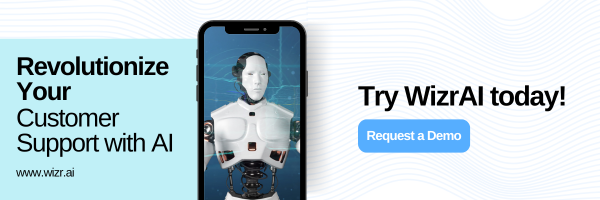Customer service is not just about solving problems; it’s about doing so efficiently and effectively. However, traditional customer service workflows often struggle to keep up with the increasing volume and complexity of customer inquiries. Customer service leaders face the daunting challenge of managing this influx while maintaining high standards of service quality.

This problem underscores the urgent need for innovative solutions that can intelligently prioritize and route customer inquiries. Enter the Intelligent Triage System, a game-changer in Customer Support Triage. In this guide, we’ll address this critical problem and provide a comprehensive roadmap for implementing an Automated Triage System that can revolutionize your Triage in Customer Service operations.
What is a Triage System in Customer Service?

A Triage System in Customer Service acts as the frontline mechanism for efficiently managing the influx of customer inquiries, ensuring that each request is handled promptly and appropriately. It serves as the initial filter, categorizing incoming issues based on predefined criteria such as urgency, complexity, or customer profile, thus laying the groundwork for effective resolution. Ultimately, the primary goal of a Support Ticket Triage is to optimize resource allocation, minimize response times, and maximize customer satisfaction by directing each inquiry to the most qualified agent or department for resolution.
Traditional vs Intelligent Triage Systems: Key Differences
Traditionally, Customer Service Triage systems relied heavily on manual sorting and routing by human agents. Incoming inquiries would be assessed based on predetermined criteria, such as issue type, customer status, or service level agreements, and then assigned accordingly. However, this approach often led to inefficiencies, delays, and inconsistencies in handling customer inquiries.
Intelligent Triage Systems, on the other hand, leverage advanced technologies such as Artificial Intelligence (AI) and Machine Learning (ML) to automate and optimize the Triage Ticketing System. These systems can analyze incoming inquiries in real-time, using algorithms to assess factors such as customer sentiment, issue complexity, and agent availability. By harnessing the power of data and automation, smart ticket routing processes can intelligently route inquiries to the most suitable agent or department, resulting in effective resolution and faster response times.
Benefits of Using AI-powered Triage Systems in Customer Service

The adoption of Intelligent Triage Systems offers several benefits for Customer Support Triage:
- Enhanced Efficiency: By automating the Triage Ticketing System, Intelligent Triage Systems reduce the burden on human agents, allowing them to focus on more complex inquiries that require human intervention. This leads to faster response times and increased productivity.
- Improved Customer Experience: Triage in Customer Service ensures that inquiries are routed to the most qualified agents, resulting in quicker resolution and higher customer satisfaction levels. Customers receive personalized and timely assistance, leading to a positive perception of the brand.
- Optimized Resource Allocation: By dynamically allocating resources based on real-time demand and agent capabilities, Automated Triage Systems help organizations optimize staffing levels and reduce operational costs. This ensures that the right resources are deployed to handle incoming inquiries efficiently.
- Data-Driven Insights: Intelligent Triage Systems generate valuable insights into customer behavior, preferences, and pain points. By analyzing historical data and customer interactions, organizations can identify trends, anticipate future needs, and make informed decisions to improve service quality and operational performance.
- Reduced Error Rates: Intelligent Triage Systems employ advanced algorithms and automation to ensure accurate classification and routing of inquiries. By minimizing manual intervention and human error, these systems help reduce the incidence of misrouted or mishandled inquiries, improving overall service quality and customer satisfaction.
- Increased Scalability: Intelligent Triage Systems are designed to scale seamlessly to accommodate fluctuations in inquiry volume and organizational growth. Whether handling a sudden surge in inquiries during peak periods or expanding operations to new markets, these systems offer the flexibility and scalability needed to adapt to changing business requirements without compromising service quality.
- Proactive Issue Resolution: Leveraging predictive customer analytics and machine learning algorithms, Intelligent Triage Systems can anticipate potential issues and proactively address them before they escalate into major problems. By identifying patterns and trends in customer inquiries, these systems enable organizations to implement preventive measures and mitigate issues before they impact the customer experience.
- Enhanced Compliance and Governance: Intelligent Triage Systems can help organizations ensure compliance with regulatory requirements and internal policies by automating processes such as data handling and privacy management. By enforcing standardized procedures and guidelines, these systems reduce the risk of non-compliance and ensure consistency in service delivery across the organization.
Key Components of an Intelligent Triage System in Customer Service

An Intelligent Triage System is a sophisticated solution that combines advanced technologies and strategic processes to streamline customer service operations. Below are the key components that make up an Intelligent Triage System:
- Data Collection and Integration
At the heart of any Intelligent Triage System lies robust data collection and integration capabilities. This component involves gathering data from various sources, including customer interactions, CRM systems, Support Ticket Triage, and other relevant databases. By aggregating data from multiple touchpoints, organizations can gain a comprehensive understanding of customer needs, preferences, and historical interactions. Integration with existing systems ensures seamless data flow and facilitates holistic analysis, enabling organizations to make data-driven decisions and personalize Triage Customer Service effectively.
- AI and Machine Learning Algorithms
Artificial intelligence (AI) and machine learning algorithms form the brainpower of an Intelligent Triage System. These algorithms analyze vast amounts of data to identify patterns, predict outcomes, and make intelligent decisions in real-time. By leveraging generative AI, organizations can automate repetitive tasks, such as initial inquiry classification and routing, thereby reducing manual effort and increasing operational efficiency. Machine learning algorithms continuously learn and adapt based on new data, allowing the system to evolve and improve over time, delivering more accurate and personalized results for Customer Support Triage.

- Automation and Routing Mechanisms
Automation and routing mechanisms are essential components that drive the operational efficiency of an Intelligent Triage System. Automation streamlines routine tasks, such as automated ticket routing, prioritization, and assignment, freeing up human agents to focus on more complex inquiries. Routing mechanisms ensure that each inquiry is directed to the most suitable agent or department based on factors such as expertise, workload, and availability. Intelligent routing algorithms consider various parameters, including agent skills, language preferences, and historical performance metrics, to optimize resource allocation and enhance response times.
- Real-Time Monitoring and Adaptation
The ability to monitor and adapt in real-time is a critical component of an Intelligent Triage System. Real-time monitoring provides organizations with immediate visibility into key performance indicators, such as response times, resolution rates, and customer satisfaction scores. This allows for the proactive identification of bottlenecks, emerging trends, and potential issues, enabling organizations to take corrective action promptly. Moreover, adaptive capabilities empower the system to dynamically adjust its algorithms and routing rules based on changing conditions, ensuring optimal performance and alignment with business objectives.
Steps to Build an AI-Powered Triage System for Customer Service
Building an intelligent triage system requires careful planning, strategic decision-making, and meticulous execution. Here are six essential steps to guide you through the process:
Step 1: Data Gathering and Preparation

The first step in building an Intelligent Triage System is to gather and prepare the necessary data. Identify the sources of data relevant to your customer support triage operations, including customer interactions, support tickets, CRM systems, and other relevant databases. Cleanse and consolidate the data to ensure accuracy and consistency, and establish protocols for ongoing data collection and maintenance. A robust foundation of quality data is essential for training machine learning algorithms and enabling accurate decision-making within the Triage Ticketing System.
Step 2: Selecting the Right Tools and Technologies
Choose the AI tools and technologies that best align with your organization’s needs and objectives. Evaluate various options, considering factors such as functionality, scalability, compatibility with existing systems, and ease of integration. Look for AI solutions that offer advanced capabilities, such as natural language processing (NLP), sentiment analysis, and predictive analytics, to enhance the effectiveness of your Automated Triage System.
Step 3: Designing Automated Triage Workflows
Design automated Triage Workflows that streamline the handling of incoming inquiries from start to finish. Define clear rules and criteria for classifying, prioritizing, and routing inquiries based on their nature, urgency, and complexity. Leverage AI and automation capabilities to automate repetitive tasks and decision-making processes, such as initial inquiry categorization and assignment to the appropriate agent or department. Ensure that automated ticket routing workflows are intuitive, efficient, and scalable to accommodate future growth and changes in customer service requirements.
Step 4: Integration with Existing Systems
Integrate the Intelligent Triage System seamlessly with existing systems and platforms within your organization’s ecosystem. Establish bi-directional data flows between the Triage Ticketing System and other key systems, such as CRM, helpdesk, and communication tools, to enable real-time information exchange and workflow automation. Collaborate closely with IT and software development teams to ensure compatibility, security, and data integrity throughout the integration process.
Step 5: Testing and Optimization
Prioritize testing and optimization to ensure the effectiveness and efficiency of the Intelligent Triage System. Develop comprehensive test cases and scenarios to validate system functionality, performance, and accuracy across various use cases and scenarios. Monitor key performance indicators (KPIs), such as response times, resolution rates, and customer satisfaction scores, to identify areas for improvement in the Ticket Triage Process. Iterate on the automated triage system based on feedback and insights gathered from testing, incorporating refinements and enhancements to improve overall performance and usability.
Step 6: Employee Training and Onboarding
Provide comprehensive training and onboarding for employees who will be using the Intelligent Triage System. Educate staff on the system’s features, functionalities, and best practices for effectively managing inquiries and workflows. Offer hands-on training sessions, tutorials, and documentation to ensure that employees feel confident and proficient in using the Triage in Customer Service system. Foster a culture of continuous learning and adaptation, encouraging employees to provide feedback and suggestions for elevating employee productivity based on their experiences and insights gained from real-world usage.
Conclusion
An Intelligent Triage System can revolutionize the way customer service operations function, streamlining processes, enhancing efficiency, and ultimately leading to greater customer satisfaction. By following the step-by-step guide outlined in this blog, customer service leaders can empower their teams with the tools and strategies necessary to effectively Triage Support Tickets. With the right technology, training, and commitment to continuous improvement, organizations can build a customer service operation that not only meets but exceeds customer expectations.
FAQs
1. What is an intelligent triage system in customer service?
An intelligent triage system in customer service uses AI to automatically analyze, prioritize, and route support tickets. It improves response times by reducing manual sorting and helps customer service teams resolve issues faster using smart ticketing and automation.
2. How does triage help desk software improve customer support?
Triage help desk software enhances customer support by automating ticket classification and assigning them to the right agents based on priority and expertise. This reduces delays, prevents backlog, and improves customer satisfaction.
3. What are the benefits of implementing an automated ticketing triage system?
The benefits of implementing an automated ticketing triage system include faster resolution times, better workload distribution, and improved customer request triage accuracy. It also helps support teams focus on high-impact tasks by handling repetitive routing automatically.
4. How can intelligent triage help with IT and technical support?
Intelligent triage for IT and technical support ensures that technical issues are quickly categorized and sent to the right specialists. Triage IT support tools analyze past incidents and use predictive logic to streamline issue resolution and reduce downtime.
5. What are the best practices for triaging and smart tickets in customer service?
Best practices for triaging and smart tickets include using AI-powered systems for classification, defining clear prioritization rules, and integrating your triage ticketing system with CRM and knowledge base tools to ensure accuracy and context in every interaction.
About Wizr AI
Wizr AI is an Advanced Enterprise AI Platform that empowers businesses to build Autonomous AI Agents, AI Assistants, and AI Workflows, enhancing enterprise productivity and customer experiences. Our CX Control Room leverages Generative AI to analyze insights, predict escalations, and optimize workflows. CX Agent Assist AI delivers Real-Time Agent Assist, boosting efficiency and resolution speed, while CX AutoSolve AI automates issue resolution with AI-Driven Customer Service Automation. Wizr Enterprise AI Platform enables seamless Enterprise AI Workflow Automation, integrating with data to build, train, and deploy AI agents, assistants, and applications securely and efficiently. It offers pre-built AI Agents for Enterprise across Sales & Marketing, Customer Support, HR, ITSM, domain-specific operations, Document Processing, and Finance.
Experience the future of enterprise productivity—request a demo of Wizr AI today.
